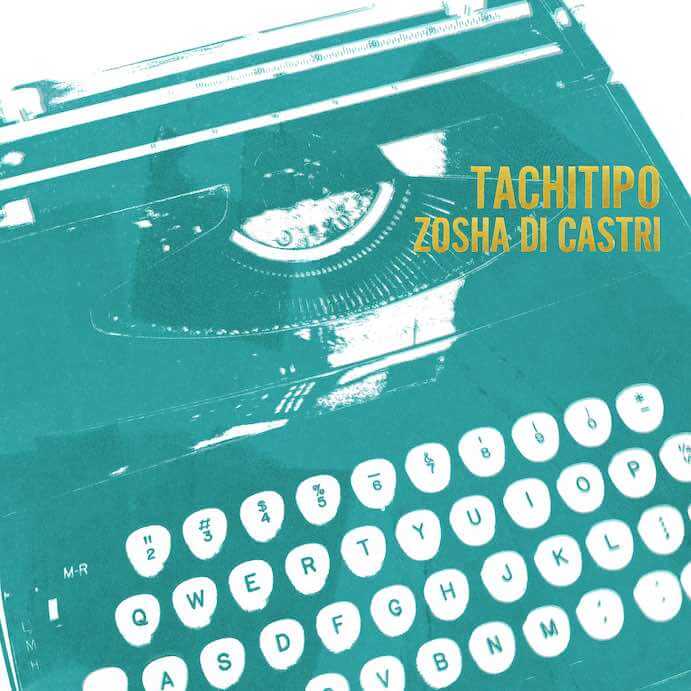Zosha Di Castri is on top of the world. Born in 1985, she is a professor of composition at an Ivy League university. Her collaborators are among the most lauded new music specialists of their generation. Her biography is a sobering read. So our expectations heading into Tachitipo (New Focus Recordings) should be high—almost singularly so: is there another living composer who can claim not only the imprimatur of one of the nation’s most prestigious institutions (the place that is, after all, why it was once called “uptown” music) but also a seemingly unerring sense of the present moment and its demands? Di Castri almost seems like a figure from the middle of the twentieth century, when the substantial resources of major cultural organizations were at the command of an international avant-garde.
The resources that are mustered on Tachitipo are indeed impressive. The record features the International Contemporary Ensemble, Talea Ensemble, JACK Quartet, Yarn/Wire, Ekmeles, and pianist Julia Den Boer; all tracks are immediate-sounding and vividly recorded (some at Oktaven Audio in Mt. Vernon, others at McGill and Banff in Di Castri’s native Canada). If you were looking for a single album to capture the state of the field in contemporary music performance in the United States, you could do a lot worse than Tachitipo.

Zosha Di Castri–Photo by David Adamcyk
And somehow, Tachitipo feels like it sums up the state of the field of composition as well: Di Castri’s music is pluralistic but never crass or blithe, recontextualizing existing musical materials in ways that half-obscure them—and then obscuring them the rest of the way by weaving them into unexpected vertical textures and horizontal formal structures. At once inventive and eerily familiar, Di Castri’s material appeals to the physiological ear and the analytical ear both, observing no taboos but accepting no easy solutions either. Throughout the record, the restlessness with which one sonic state shifts into another is both challenging and satisfying.
The Animal After Whom Other Animals are Named, a strong choice for an opener, provides a good introduction to Di Castri’s practice; it has recourse to utterances of all kinds, making thorough use of Ekmeles’s many talents, and its integration of electronic and vocal sounds is compelling and seamless. Cortège, however, is where the depth Di Castri’s musical imagination is fully revealed. Indelible moments—like a climactic woodwind multiphonic that sounds like a streak of red paint—abound. It’s a highlight reel for Di Castri and Talea both. La forma dello spazio is intended to be performed by musicians distributed around the hall: although its merits are less obvious than those of the other pieces on this audio recording, enough comes through to suggest that the experience of hearing it live would be a special one.
String Quartet No. 1 and the record’s title track are Wunderkammers both. Much of the string quartet’s material (in particular, its “reversed” gestures) is truly uncanny, owing as much to the meticulousness of JACK Quartet as it does to Di Castri. And if the two piano/two percussion format should someday become a workhorse instrumentation like the Pierrot ensemble, then Tachitipo, a dense and intricate work ideally suited to Yarn/Wire, is destined for a stall in that stable.

Zosha Di Castri–Photo by David Adamcyk
Just as twenty years ago so many US composers were moved, against all good advice, to write a “9/11 piece,” a bumper crop of “demagogue pieces” has lately hit the concert stage; Di Castri’s contribution to this literature, Dux, is the least convincing work on the record. I wish I didn’t know what it was about. Even this false step, however, is an impressive feat of composing. The sound of the piano, rather than the notes played, is at issue; harmonies and gestures with clear intertextual implications are cunningly reframed, becoming bruises left by the pianist’s pummeling of the keyboard.
Taken as a whole, Tachitipo is a formidable statement. It is so comprehensively realized, institutionally ratified, and sensitive to the creative exigencies of the 21st century that one wants to send a copy of it to the publishers of textbooks for music history survey courses in the hope that it will be included in a last chapter or two. It’s an antidote to the pessimism we might sometimes feel about the situation of contemporary music, a rebuttal to the tired assertion that there are no longer any hydrodynamic currents in our ocean, and a gauntlet thrown down in front of composers twice Di Castri’s age. It’s worth listening to.




















